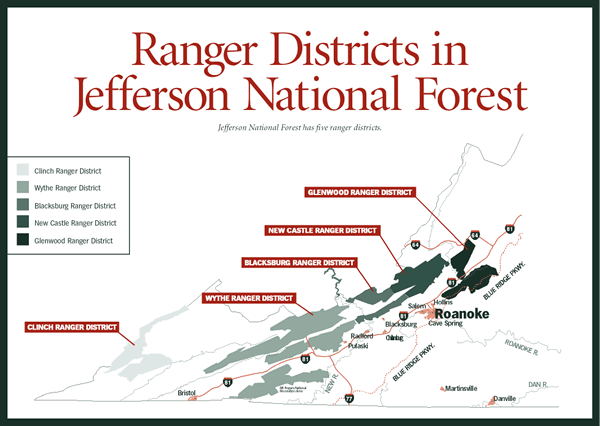Public Land

No matter which way you lean politically, left or right, up or down, forward or backward, you have to admit that the Bush Administration's proposal to pay for the Secure Rural Schools and Community Self-Determination Act by selling off National Forest land (mostly in the Southern Appalachians to pay for schools in the western US) is a bad move. Supporters of the sale proposal suggest that these forest lands are isolated and hard for the U.S. Forest Service to manage, but the idea of selling capital assets to pay for short-term needs sets a bad precedent. As the farmers around my neck of the woods say, "you don't sell your seed corn for spending money." These forest lands aren't just any old asset; they are an important part of our nation's heritage. I assume that if you are visiting and/or contributing to this blog, you agree as well.
The Virginia land on the list includes 1,630 acres in Bland County, 1,341 acres in Smyth County and 735 acres in Scott County. Other counties have less land on the list, with acreage ranging from 390 each in Botetourt and Montgomery counties to a 2-acre tract in Augusta County. I am happy to report that the Board of Supervisions for each of these counties have voted to condemn the proposal as well as Congressmen Boucher (D) and Goodlate (R). Goodlate is the Chairman of the House Agricultural Committee and has stated that when this proposal is referred to this committee, it will not make it out due to lack of support.
According to the Forest Service, loss of open space is one of the four greatest threats to forests. Nationwide, more than 21.8 million acres of open space were lost to development between 1982 and 1997, about 4,000 acres per day, three acres per minute. The threat is greatest in the eastern U.S., where most of the privately owned forests are located. Privatized these lands will speed the loss of open space. Even if it were true that the selected tracts no longer meet national forest system needs, are expensive to manage and are detached from national forest units, isolated tracts of public land have intrinsic value even while not actively managed. In the early 20th century, in the wake of dramatic flooding, eastern national forests were established from the purchase of damaged lands primarily for the purpose of reforestation and watershed protection. As these lands healed and forests were replenished, the crisis subsided. Increasing development now makes such smaller tracts of open space all the more important on the landscape.
Congress should step up and find better means to fund rural schools, like cutting some money for pet projects in their own districts, rather than resort to the measure of selling public lands to feed current budget shortfalls. What will we sell to support the program years from now when the land is in private hands?




1 comment:
Wow, there is so much effective info above!
full verions game | free games home | pc games | free game win | free games
Post a Comment